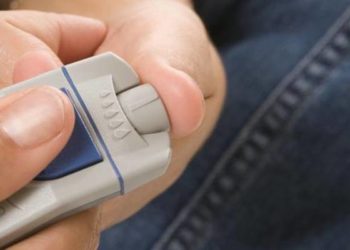Spot capillary HbA1c testing may have a role in early detection of type 2 diabetes
1. In high-risk patients, point-of-care capillary HbA1c was superior to venous HbA1c as uptake was double, leading to faster results, fewer repeat visits, and identified more undiagnosed Type 2 Diabetes Mellitus.
Evidence Rating Level: 1 (Excellent)
This cluster randomized controlled trial evaluated point-of-care capillary HbA1c (POC-cHbA1c) versus standard venous HbA1c (vHbA1c) for type 2 diabetes (T2D) screening across 8 Hong Kong primary care clinics. Among 852 high-risk patients (mean age 58, 62% female), POC-cHbA1c demonstrated superior performance: screening uptake was double that of vHbA1c (76.0% vs 37.5%, OR=7.06, p<0.001), attributed to immediate results and avoidance of repeat visits. The intervention identified significantly more undiagnosed T2D (4.2% vs 1.4%, p=0.016) and prediabetes (11.8% vs 6.9%, p=0.015), requiring only 61 screenings to detect one additional diabetes case. Notably, 40.7% of POC-cHbA1c tests showed elevated levels (≥5.6%) versus 27.5% for vHbA1c, with better subsequent OGTT completion (33.5% vs 22.7%, p<0.001). Mixed-effects modeling confirmed POC-cHbA1c’s advantage even after adjusting for clustering and covariates (OR=1.99 for combined diabetes/prediabetes detection, p=0.048). The findings suggest POC-cHbA1c’s logistical advantages – including same-visit testing and reduced patient burden – could transform early diabetes detection in resource-constrained primary care settings, though further studies should evaluate long-term glycemic outcomes and the cost-effectiveness of this screening approach.
Click to read the study in BMC Medicine
Image: PD
©2025 2 Minute Medicine, Inc. All rights reserved. No works may be reproduced without expressed written consent from 2 Minute Medicine, Inc. Inquire about licensing here. No article should be construed as medical advice and is not intended as such by the authors or by 2 Minute Medicine, Inc.







